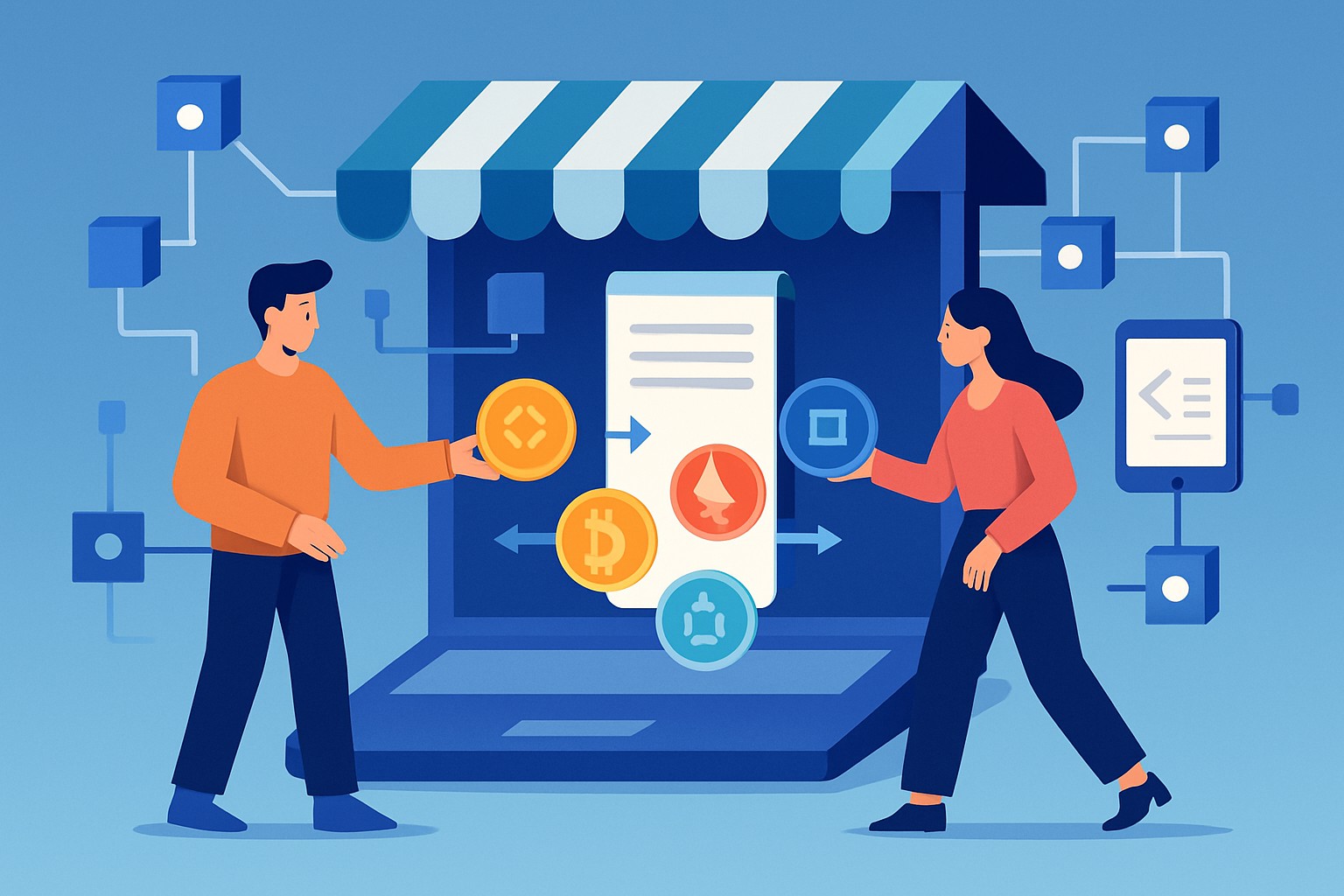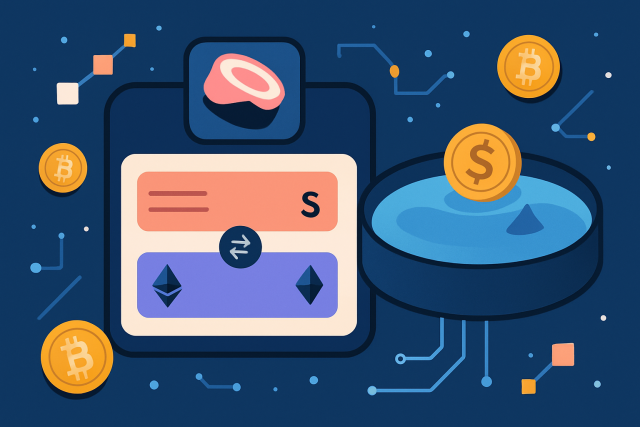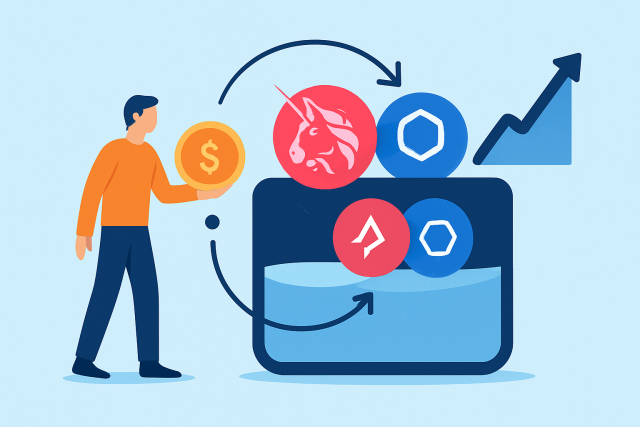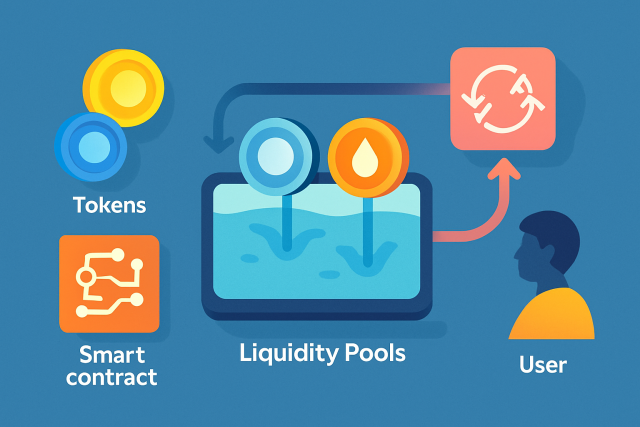What Is a DEX and Why Traders Choose Decentralized Trading?


Decentralized trading has steadily gained traction as a compelling alternative to centralized exchanges, with many asking: what is a DEX? These platforms put more control firmly in the hands of users while offering better security and a noticeable boost in privacy. At the heart of this shift are Decentralized Exchanges or DEXs, which have quickly become essential players in the bustling crypto and blockchain arena by letting users swap assets directly with one another—no middleman needed.
So, What Exactly Is a DEX? A Look at What Is a DEX
A Decentralized Exchange (DEX) is a cryptocurrency platform where users trade directly with each other, cutting out the middleman or any central authority.
Centralized exchanges tend to work like banks that hold your funds and handle orders for you. Decentralized exchanges feel more like open marketplaces where you keep full control of your assets. Think of centralized exchanges as trusted shopkeepers—solid, reliable and ready to help—while DEXs resemble bustling bazaars where people trade directly, no middleman needed.
- Blockchain Integration: DEXs run right on blockchains which means everything stays crystal clear and cannot be tampered with—a real trust booster.
- Smart Contracts: These nifty automated agreements handle trades on their own cutting out the middleman and keeping things secure.
- Liquidity Pools: Picture these as shared pots of funds gathered by users to make swapping tokens a breeze and smooth out the process.
- Non-Custodial Wallets: Users hold the keys to their kingdom here and stay firmly in control of their private keys and funds at all times.
- Decentralized Order Books: Some DEXs use open order books stored on the blockchain to match trades, adding a layer of openness that is pretty refreshing.
How Does a DEX Actually Work, Anyway
A DEX relies on smart contracts to keep trading automatic and secure. Instead of routing your order through a central middleman, the smart contract handles all exchange steps behind the scenes and taps into liquidity pools that users create by depositing their tokens.
Securely link your non-custodial wallet to the DEX platform. It’s like handing over the keys but don’t worry, you’re still the boss.
Choose the token pair you want to trade, such as ETH for USDC or whatever floats your boat.
The DEX’s smart contract swoops in to direct your trade exactly where it needs to go and locks onto the correct liquidity pool.
The liquidity pool then gets to work, automatically updating token balances to make sure your swap goes through smoothly. It’s almost like magic, but with math.
Finally, the trade settles instantly on-chain with no middlemen hanging around with your funds. It’s just you and the blockchain humming along.
Imagine a DEX as a vending machine for cryptocurrency tokens. You pop in one type of token and just like magic the machine quickly calculates how much of another token you get in return. It wraps up the swap openly and automatically.
What Really Pulls Traders Into the World of Decentralized Trading
More traders these days appear to be leaning towards DEXs probably because they offer greater privacy and stronger security along with full control over your own funds—something that’s hard to beat. Decentralized platforms usually sidestep censorship and cut down the risk tied to relying on a single point of failure.
- Users stay fully in the driver's seat when it comes to their assets which means there is less worry about hacks or shady business that plagues traditional exchanges.
- Since there is no single point that can bring the system down these platforms boast better reliability and are far less prone to outages or censorship.
- Many DEXs skip the KYC or AML hoop-jumping which is a real win for those valuing their privacy.
- If you’ve got internet you’ve got access making DEXs truly open and welcoming to anyone anywhere around the globe.
- With clear open-source code and regular audits trust gets a boost while the odds of hidden surprises drop considerably.
- Trading often feels snappier and more adaptable since everything settles right on-chain cutting out the usual middleman delays.
People often fret that DEXs suffer from thin liquidity or can be a maze to navigate but clever innovations like liquidity mining and friendlier interfaces are closing those gaps quickly. These days, plenty of DEX platforms hold their own against centralized exchanges in daily trading volume.
Common Types of DEX Models
Let's dive into some of the usual suspects you will come across when exploring DEX models. These come in various shapes and sizes, each with its own quirks and strengths kind of like a toolbox where every tool has its moment to shine.
DEXs usually come in a few flavors. One popular style is Automated Market Makers (AMMs) which cleverly set prices using algorithms and liquidity pools—no humans haggling here. Then there’s the classic approach with traditional order books where buyers and sellers throw in their orders directly like a lively marketplace.
| Model Type | How It Works | Advantages | Drawbacks | Example Platforms |
|---|---|---|---|---|
| Automated Market Maker (AMM) | Executes trades automatically using liquidity pools and clever pricing algorithms. Users pitch in liquidity and get rewarded with fees—kind of like earning interest while you sleep. | Delivers simple, speedy trades with steady liquidity available at all times; no permissions needed, so anyone can jump in | Be wary of impermanent loss sneaking up on you; bigger orders might nudge prices around more than you would like | Uniswap, SushiSwap |
| Order Book DEX | Runs on an on-chain order book where buyers and sellers place limit and market orders that get matched when the stars align. | Feels like the traditional trading floor you’re used to; handles big or complicated orders better than most | Order matching isn’t instant and liquidity can get a bit fragmented across various orders, which might slow things down | dYdX, Serum |
| Hybrid DEX | Mashes up AMM liquidity pools with order book matching, aiming to give you the best of both worlds—improved liquidity and more precise pricing. | Hits a sweet spot between always-available liquidity and spot-on pricing; flexible enough for a range of trading styles | A bit trickier to engineer and needs more tech muscle behind the scenes | Binance DEX, Loopring |
Potential Risks and Challenges When Trading on a DEX
Trading on a decentralized exchange (DEX) isn’t all sunshine and rainbows; there are some bumps along the road you should be aware of. While DEXs bring a lot of freedom and control into your hands, they also come with their own set of risks and challenges that can catch even seasoned traders off guard. It’s important to tread carefully, keep your wits about you, and understand that this landscape can get a bit wild at times.
DEXs offer quite a few perks but it’s worth keeping an eye on some technical hiccups that can pop up. Think of impermanent loss when you’re supplying liquidity as a pesky side effect. Then there’s the ever-present gamble with smart contracts—they’re powerful but not foolproof. Add front-running bots into the mix that can sometimes spoil the party and generally the liquidity won’t match the muscle of big centralized exchanges.
- Impermanent loss often chips away at what liquidity providers earn when token prices swing wildly. It’s one of those pesky realities that can catch you off guard.
- Front-running attacks allow others to sneak in ahead of your trades, which can throw a wrench in your expected outcome. It’s like someone cutting the line right before you.
- Skimping on audits is a gamble best avoided when bugs or vulnerabilities lurk in smart contracts that haven’t gone through a thorough audit.
- Trading on DEXs can feel slower sometimes, thanks to blockchain confirmation delays that test your patience more than you’d like.
- The options for converting traditional currency directly into tokens remain a bit slim, making those fiat onramps less user-friendly than we’d hope.
Traders really ought to roll up their sleeves and do some thorough digging, sticking to well-known and audited DEX platforms like they’re trusted friends.
Getting Started with a DEX Your Crash Course
Starting out with a DEX has become surprisingly straightforward even if you are just dipping your toes in. You simply set up a non-custodial wallet and connect it to a DEX platform. Then make your very first token swap while holding full control of your assets without surrendering them to anyone else.
Pick a popular non-custodial wallet like MetaMask or Trust Wallet—these are the go-to options that won’t let you down.
Load up your wallet by transferring some cryptocurrency from another exchange or wallet you already have. It’s like funding your digital piggy bank.
Swing by a trustworthy DEX platform compatible with your wallet, such as Uniswap or PancakeSwap. These spots are where the real swapping magic happens.
Connect your wallet to the DEX and then carefully pick the tokens you want to swap. It’s a bit like shopping but for crypto.
Seal the deal by completing the trade. Don’t forget to keep an eye on its progress with a blockchain explorer to ensure everything gets confirmed smoothly—no surprises there.
When trading on a DEX, it’s a good idea to keep a close eye on gas fees since these are the transaction costs paid to blockchain validators—and they can swing quite a bit depending on how busy the network gets. It’s also worth setting your slippage tolerance with care because this controls the biggest price gap you’re willing to tolerate between placing and actually executing your order, which can save you from those annoying failed trades.
What the Future Holds for Decentralized Exchanges
The future of DEXs looks promising thanks to game-changing innovations like cross-chain compatibility and layer-2 scaling solutions and slicker more user-friendly interfaces.
New blockchain technologies are stepping up to tackle the usual headaches faced by DEXs (what is a DEX), aiming to speed up transactions and trim down those pesky fees—often by leaning on layer-2 scaling or sidechains. Cross-chain bridges make it a breeze to move assets between different blockchains, which in turn really pumps up liquidity and expands trading options. Meanwhile, there is a clear push to craft friendlier interfaces and smoother user experiences so newcomers don’t feel like they’ve stumbled into a maze. Plus, ongoing security tweaks and thorough audits go a long way toward earning users’ trust.






